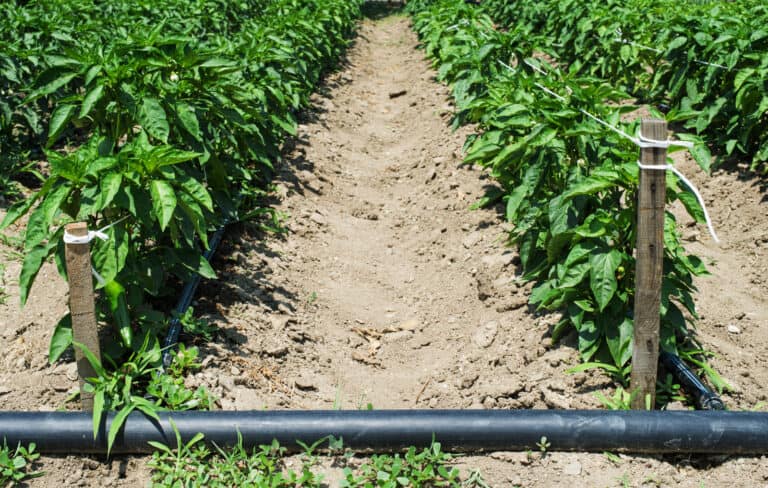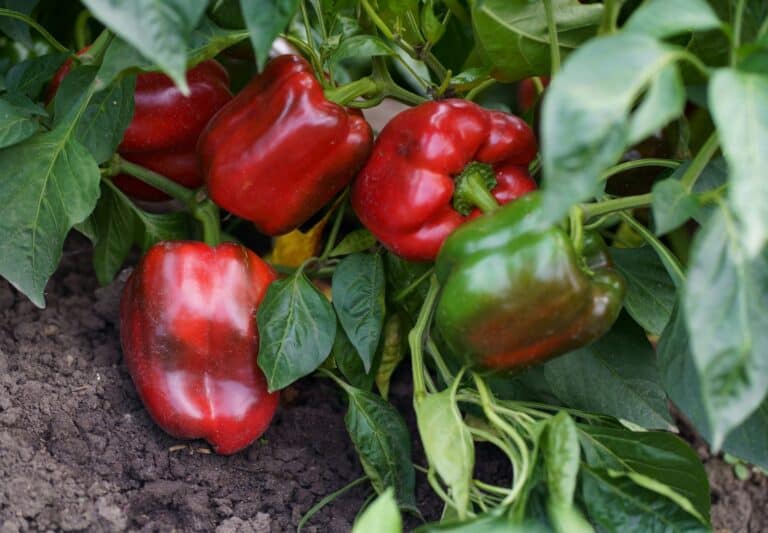How to dry chili peppers (4 methods!)
I grow a lot of chili peppers every summer, and by the end of the season, I have way more than I can hope to eat before they spoil. Luckily there are a handful of ways you can preserve peppers so you can use them year-round: by making hot sauce, pickling and canning them, and easiest of all, by drying them.
People use four main methods to dry chili peppers: stringing them up and hanging them, using a dehydrator, or drying them in the oven. Read on to learn the pros and cons of each, plus how to do them successfully!
Note: This post contains affiliate links, which means that if you click and purchase we may earn a small commission at no extra cost to you. Thank you for supporting our content!
Stringing up chili peppers to air-dry
Pros: Air-drying chili peppers is one of the most traditional method, requiring no equipment. The benefits are that it is simple and free to do!
Cons: However, this method takes, by far, the longest time. The peppers can also spoil during the air-drying process if there isn’t enough ventilation.
Time: It usually takes at least three weeks to fully air-dry peppers.
How to do it: To air-dry your peppers, cut a slit in the flesh, and drive a thread or string through the stem. Tie a thick knot on the end of the string so the peppers don’t fall off and hang them in a well-ventilated area. To ensure they dry properly, you may want to run a fan on them.
It will typically take at least three to four weeks to dry, but the time will depend on how big and thick-fleshed the peppers are, the room’s temperature, and how well-ventilated the area is. You will know that they are fully dried when they feel brittle to the touch.
Sun drying chili peppers
Pros: Sun-drying chili peppers is another traditional method of food preservation.
Cons: This method requires a very specific environment that most people don’t have!
Time: It takes several days to sun-dry peppers.
How to do it: Slit the peppers open or cut them in half and lay them on stainless steel screen trays. Leave them in the sunlight where the temperature is around 90 degrees F and humidity is below 60%. If the temperature drops too low at night, bring them inside.
Drying peppers in a dehydrator
Pros: Drying peppers in a dehydrator is a quick and low-maintenance way to go about it. You can set it and forget it, and soon you’ll have perfectly dried peppers.
Cons: This method requires a dehydrator, which you may not have already. I bought my dehydrator for less than $60 on Amazon.
Time: If you slice your peppers into rings, it usually takes about 8-12 hours to dry them in a dehydrator. Or, if you cut them in half or dry them whole, it may take up to a few days.
How to do it: The easiest way to dry peppers in a dehydrator is to pop them in and set the machine to 135-140 degrees F. If you want them to dehydrate more quickly, or if they are large and can’t fit in the trays, slice them up — the thinner they are, the faster they will dry.
Drying peppers in the oven
Pros: Oven-drying peppers is the fastest method and requires equipment you probably already have.
Cons: This method requires a little bit of babysitting, and having your oven running for so long can really heat up your home.
Time: It takes anywhere from 16-24 hours to oven-dry chili peppers.
How to do it: You need to achieve a temperature of 140 degrees F in the oven to dry them properly — you want to dry your peppers, not cook them. Set your oven as low as it goes (usually around 170 degrees F), and crack it open 2-6 inches, monitoring the internal temperature of the oven with a thermometer.
Slice your peppers in half and put them on a drying tray (or a cake cooling rack on a cookie tray!). Allow them to dry until they are brittle, constantly monitoring the temperature.
Should you remove the seeds and membrane when you dry peppers?
Whether you keep or remove the seeds and membrane of the peppers when you dry them is completely up to you. Personally, I leave them in for two reasons.
First, the piths and ribs (membrane) contain most of the heat, so when you leave them in the chilis retain more of their spice — and I love spicy food! And second, it’s easier, and I’m lazy! If you want milder dried peppers and you don’t mind the additional work, removing the membrane and seeds will help you achieve that.
Do I need to pasteurize my peppers?
Pasteurization is a process that kills any insects or insect eggs in dried peppers. If you use the dehydrator or oven methods of drying your peppers, you may not need to pasteurize them because the heat will already pasteurize them. If you air-dry or sun-dry your peppers, you may want to pasteurize them by placing them in a freezer that maintains a temperature of 0 degrees F for 48 hours or longer.
You can also pasteurize peppers by baking them in the oven at 160 degrees F for 30 minutes.
How long do dried chili peppers last?
Dried chili peppers can be saved for anywhere from 1-5 years if they are properly dried and stored. Aim to keep them in a cool, dry place in your home. You can also freeze the dried peppers to extend their shelf life even more!
How to tell if my dried chili peppers are still good
Because the recommended storage time range varies so much, you may wonder how to tell if your old peppers are still good. First, visually inspect them for any mold. If you don’t dry out enough of the moisture, or if they are stored in an area with too much moisture, they will spoil much faster than fully dried peppers.
As long as the peppers are not moldy, they should be safe to eat! The risk after saving them for longer than a year is that the flavor may dissipate over time. So, if you have dried peppers that have been sitting in the back of your pantry for three years and you want to know if they’re still good, do a taste test! Crush up a small amount of the peppers and give it a taste, and your taste buds will let you know if they’ve gone too long.
What to do with dried chili peppers
Dried chili peppers are an incredibly versatile ingredient! You can leave them whole (or in the size that you cut them to before drying), and then re-hydrate them by soaking them in water. Then you can blend the rehydrated peppers into sauces and salsas.
You can grind them into pepper flakes, either using a food processor or a mortar and pestle and use them in cooking or sprinkle them on pizza. You can also grind them into chili powder and, again, use it in any way you would use chili powder that you buy from the store: as a seasoning, in rubs, in chili, etc.






